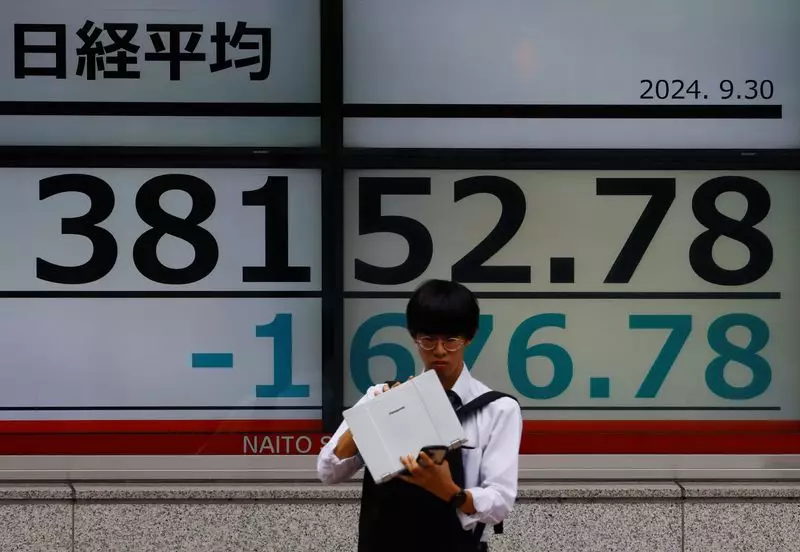Asian markets experienced a notable rally on Monday as investor confidence was buoyed by unexpectedly benign inflation data from the United States. This news not only rekindled hopes for potential policy easing in the upcoming year, but it also provided a collective sigh of relief among market participants following news that the U.S. government had successfully avoided a shutdown. The combination of these factors positively influenced market performance across the region, with the MSCI Asia-Pacific index, excluding Japan, gaining 0.3%. Japan’s Nikkei index rose 0.7%, while South Korea’s benchmark climbed 0.9%.
The current week appears less eventful in terms of central bank activity, with fewer key economic data points scheduled for release. Unlike the previous week’s whirlwind of central bank decisions, which dominated headlines, this week focuses on the aftermath of those decisions rather than new developments. Market analysts are keenly observing developments ahead of the publication of minutes from several central bank meetings, which could provide further insights into monetary policy direction.
The strength of the U.S. dollar is another key factor shaping the current financial landscape. As the economy shows resilience and bond yields rise, the dollar continues to appreciate. The dollar index is hovering near a two-year high, currently standing at 107.970, having gained 1.9% in just a matter of weeks. Such strength poses a challenge for commodities, especially gold and oil, which are affected by the combination of a strong dollar and rising yields. Gold prices recently slipped to $2,624 per ounce, witnessing a decline of 1% in the previous week. Similarly, crude oil prices are struggling under the weight of a strong dollar and concerns surrounding demand, especially in light of disappointing retail sales figures from China.
Emerging market economies are coming under increasing strain as they grapple with these dynamics. Currency devaluations risk exacerbating domestic inflation, prompting many countries to intervene in an attempt to stabilize their currencies. Analysts caution that persistent high yields could result in further complications for these economies as they navigate the dual pressures of maintaining competitiveness and controlling inflation.
While Asian markets revel in a surge, Wall Street is presenting a more mixed picture. After a week in which the S&P 500 fell nearly 2% and the Nasdaq Composite dropped by 1.8%, optimism for a year-end rally is being tempered by concerns over market concentration. Bank of America highlighted that while the S&P 500 is up 23% year-to-date, a significant portion of that gain is attributable to just a dozen large-cap companies. Excluding these, the index shows a far less impressive gain of only 8%.
Despite the recent downturn, futures for both the S&P 500 and Nasdaq are on the rise this week due to the favorable inflation report. This data has prompted speculation regarding the Federal Reserve’s future policy decisions, with traders now assigning a 53% chance of a rate cut by March and a 62% chance for May. However, expectations of more government borrowing to fund spending initiatives may burden bond markets, leading to a sharp rise in 10-year Treasury yields, which are up by 42 basis points over the past two weeks.
The latest inflation figures have provided a temporary respite from the hawkish tone that characterized recent Fed communications. Yet, analysts remain cautious. In a statement, JPMorgan’s Michael Feroli echoed this sentiment, suggesting that while core inflation figures are less alarming, emerging threats—such as tariffs and immigration restrictions—could pose challenges for future optimism. With projections of 75 basis points in rate cuts next year, the overarching theme remains one of careful navigation amidst a complex economic landscape.
While investor sentiment is currently buoyed by positive signals from inflation and government stability, the dangers of emerging market vulnerabilities, bond market shifts, and the concentration of gains in U.S. equities cannot be ignored. Stakeholders are urged to maintain a balanced approach as they monitor these unfolding dynamics in the global financial market.

